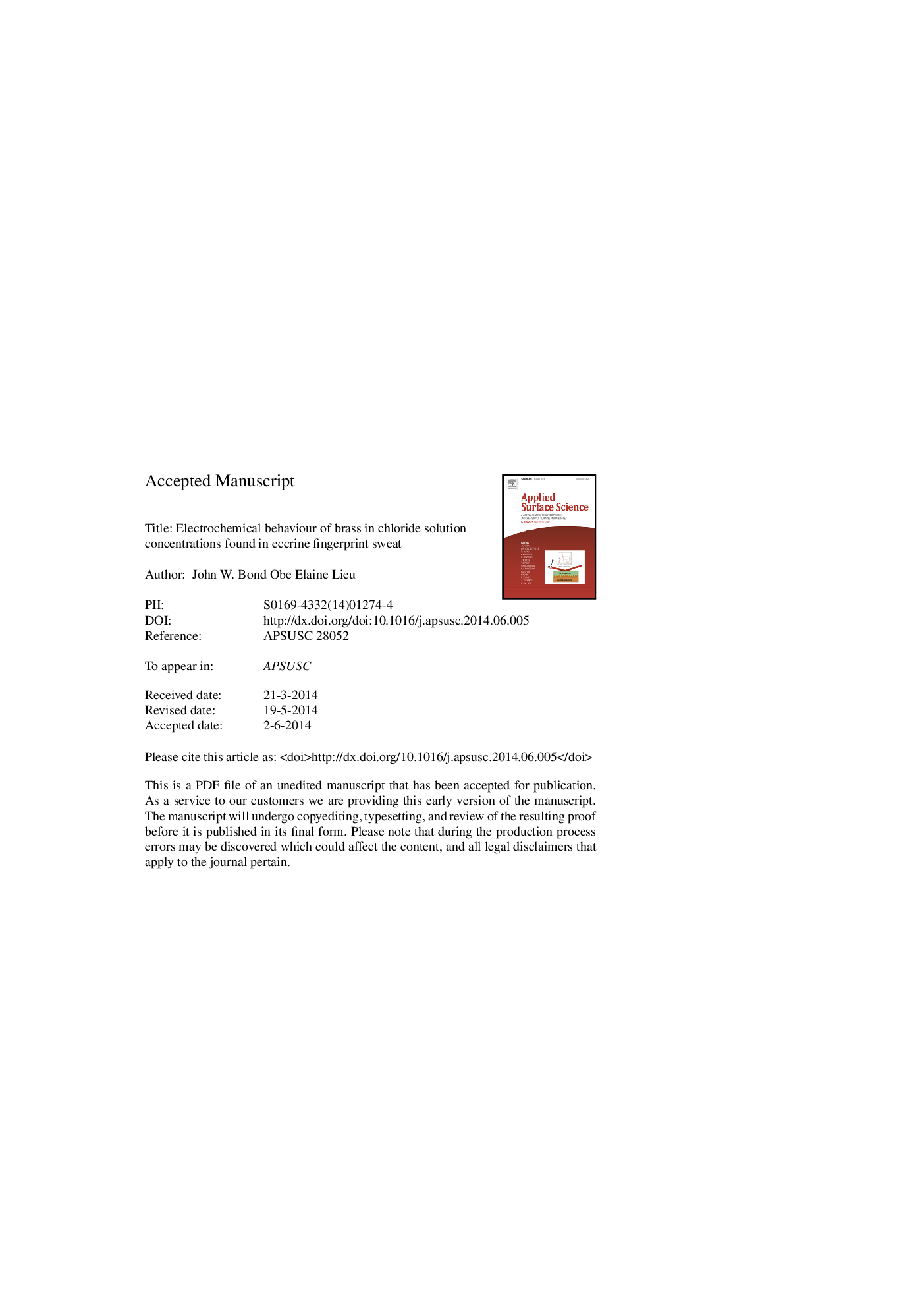| Article ID | Journal | Published Year | Pages | File Type |
|---|---|---|---|---|
| 5356371 | Applied Surface Science | 2014 | 36 Pages |
Abstract
In this work, the corrosion properties of α phase brass immersed in concentrations of aqueous NaCl solutions that are typically found in eccrine fingerprint sweat and range between 0.01 M and 0.2 M have been analysed. Analysis methods employed were electrochemical techniques, X-ray photoelectron spectroscopy and optical profiling. For NaCl concentrations <0.2 M, active corrosion did not occur although, after a period of 24 h, a passivating layer of mainly zinc oxide formed. At a concentration of 0.2 M active corrosion did occur, with measured corrosion potentials consistent with both brass and copper dissolution. A 1 h contact time at this concentration (0.2 M) resulted in the formation of a zinc oxide passivating layer with the surface ratio of zinc oxide to copper oxide increasing with time. Film thickness was calculated to be of the order of 1.3 nm after 24 h contact. Formation of oxide layers on brass by fingerprint sweat as observed here may well have implications for the successful investigation of crime by the visualisation of corrosion fingerprint ridge patterns or the reduction of hospital environmental contamination by hand contact with brass objects such as door handles or taps.
Related Topics
Physical Sciences and Engineering
Chemistry
Physical and Theoretical Chemistry
Authors
John W. OBE, Elaine Lieu,
